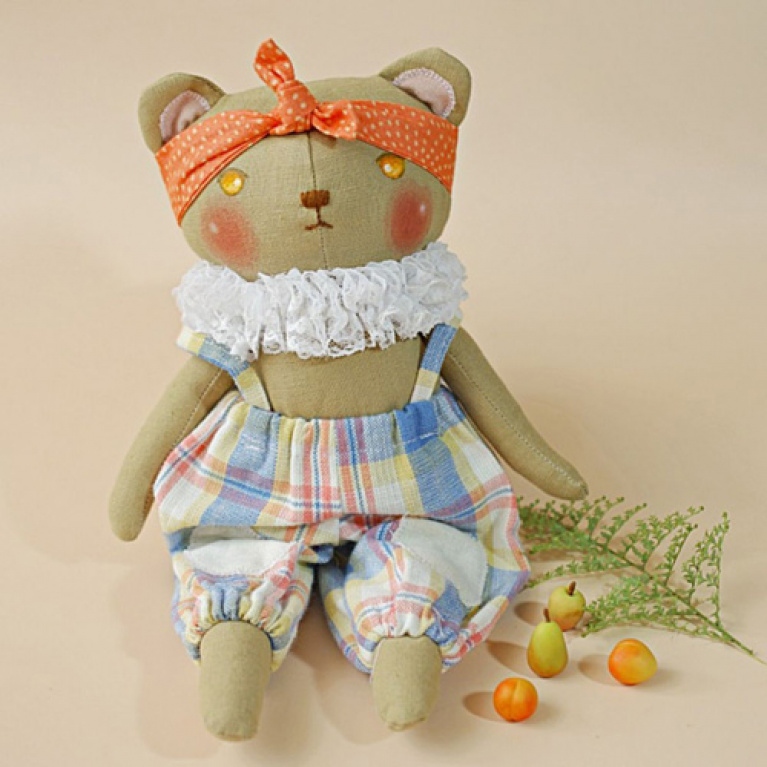- Mar 28, 2025
7+ facts about a baby's Thôi Nôi ceremony you may not know
Laughter fills the room as the little one plays with their small birthday cake. Today is their first birthday, but for the family, it is more than just a party—it is the Thôi Nôi ceremony. Grandma prepares the offering table, Mom sets out the objects for the baby to pick, and Dad takes pictures of every special moment. The adults smile and chat, “What will the baby choose first? Maybe they will be a doctor or an engineer one day!”
So why is this day so important? Behind this ceremony are deep meanings and fun traditions that not everyone knows. Let’s explore 7+ surprising facts about Thôi Nôi with CHUS!
1. An important milestone in your child's life
Have you ever wondered why it's called "Thôi Nôi"? In Vietnamese, "thôi" means to leave behind, and "nôi" refers to the small cradle where babies sleep in their first months. So, Thôi Nôi is not just about giving up the cradle—it marks the moment when a baby starts exploring the world beyond their familiar space. This is an important milestone in their growth. Some also call it the "Đầy Năm" ceremony, which means the baby has completed their first full year of life.
But Thôi Nôi isn’t just about growing up. For Vietnamese families, it also carries deep spiritual meaning. Stay with CHUS to learn why this tradition is so special!
2. A Moment to Give Thanks
Laughter fills the house as the family gathers to celebrate the baby’s first birthday. It’s a joyful day, but in the middle of the excitement, Grandma carefully lights incense at the altar, her hands pressed together in respect.
In Vietnamese tradition, the Twelve Midwives (Mười Hai Bà Mụ) are believed to shape and protect a baby from birth. To show gratitude, families prepare an offering table with fruits, sticky rice, sweet desserts, and boiled chicken during the Thôi Nôi ceremony. These offerings are made to the Twelve Midwives and Đức Ông, a guardian spirit, as a way to give thanks and pray for the child’s health and happiness.
But Thôi Nôi is not just about the baby. It is also a time to appreciate parents and grandparents—the ones who have cared for the child since birth. That’s why, on this special day, people don’t just send wishes to the baby but also express deep gratitude to the family.

The Thôi Nôi ceremony honors the Twelve Midwives and prays for the baby's health and well-being. (Source: Internet)
3. Why Is the Thôi Nôi Ceremony Based on the Lunar Calendar?
Unlike modern birthdays that follow the solar calendar, this ceremony is based on the Lunar Calendar. It takes place when the baby reaches 12 lunar months. But why?
3.1.Based on Vietnamese beliefs.
People in Vietnam have long believed that the Lunar Calendar follows the natural cycles of the universe and affects a person’s fate. That's why major events like Đầy Năm (first birthday), Đầy Tháng (one-month celebration), weddings, and ancestor worship follow the Lunar Calendar.
3.2. Babies are considered one year old at birth.
In Vietnamese tradition, a newborn baby is already counted as one year old. There’s also a saying: “A child born a day early is better than an hour late.” Because of this, the Thôi Nôi ceremony usually happens earlier than the solar calendar birthday—on the baby’s lunar birth date.
3.3. Linked to nature and farming.
Long ago, Vietnamese people relied on agriculture, and the moon’s cycle influenced planting and harvesting seasons. This is why many traditional customs, including Thôi Nôi, follow the Lunar Calendar to stay connected with nature.
>>> Xem thêm: What Is Babies Thôi Nôi? Understanding Vietnam’s Special 1-Year Birthday Celebration
4. How to Properly Prepare for the Thôi Nôi Ceremony?
At sunrise, the whole family is busy preparing. Mom cooks chè (sweet dessert soup), Grandma arranges the offering table, and Dad carefully lights incense. The Đầy Năm (first birthday) ceremony is not just a tradition—it’s a way to give thanks and pray for the baby’s well-being.
- Choosing the right day: The ceremony follows the Lunar Calendar and is usually held in the morning or early evening.
- The offering table includes: Sticky rice (xôi), sweet dessert soup (chè), boiled chicken, porridge, fruits, betel leaves and areca nuts (trầu cau), and incense with candles.
- The ritual: Parents pray and wish for their child’s health and happiness. Then comes the "Bốc Thôi Nôi" ritual, where the baby picks an object that symbolizes their future. The family gathers to celebrate and share their wishes.
Whether the ceremony is simple or elaborate, what matters most is the love and blessings given to the child.

The family gathers, prepares the offering table, and shares their best wishes for the baby. (Source: Internet)
5. A Fun Tradition or a Real Glimpse into the Future?
The little one wobbles toward the table, eyes wide with curiosity. The whole family holds their breath—what will the baby pick first? A pen, money, or a stethoscope? Suddenly, those tiny fingers grab… a pen! The room erupts in excitement: "Looks like we have a future journalist!"
The Bốc Thôi Nôi (First Object Picking Ritual) is more than just a tradition—it’s a joyful moment filled with family hopes. Many believe the first object the baby picks can hint at their personality and future career. Here are some common items and their meanings:
- Pen, book: A love for learning, possibly a teacher, journalist, or writer.
- Money, gold: A promising future in business or finance.
- Stethoscope, syringe: A potential doctor or healthcare professional.
- Computer, phone: A future in technology, engineering, or digital content creation.
Though mainly a fun tradition, the Bốc Thôi Nôi ritual is also a way for family members to send their best wishes to the child. In the end, a baby’s future isn’t decided by a single object—but by the love, support, and education they receive.
6. Interesting Facts About Thôi Nôi You Might Not Know
Do you think Thôi Nôi is just a simple birthday celebration? In reality, this tradition carries many fascinating aspects that not everyone is aware of:
- In Northern Vietnam, this celebration is called Lễ Đầy Năm (Full-Year Celebration), while in Southern Vietnam, it is known as Thôi Nôi, meaning the baby officially "leaves the cradle" and enters a new stage of growth.
- Some families have the baby pick an object three times, believing that the first choice reflects their interests, the second reveals their talents, and the third predicts their future career.
- According to folk beliefs, girls typically celebrate on the 11th day of the Lunar Calendar, while boys have their ceremony on the 12th. Traditionally, people believed that girls should “marry early,” so their ceremony was also held earlier.
- Meanwhile, some families choose to skip the object-picking ritual, believing that a child’s future is shaped by their own choices and efforts rather than a single symbolic object.
No matter how it is celebrated, Thôi Nôi remains a meaningful milestone—marking the beginning of a new journey for the child and bringing joy to the entire family. Have you heard of these traditions before?

More than just a celebration, it marks a meaningful milestone in a child's new journey. (Source: Internet)
7. Meaningful Gift Ideas for a Baby’s First Birthday
A baby’s first birthday is a special milestone, so choosing a gift that is both meaningful and practical is important. Here are some thoughtful gift ideas to celebrate this occasion:
7.1. Age-Appropriate Toys for Development
At one year old, babies start exploring the world around them. Educational toys that help develop cognitive and motor skills are a great choice. You could also consider a soft linen teddy bear, safe for a baby’s delicate skin!

Toys that support intellectual and skill development
7.2. A Thoughtful Gift Box Full of Love
Welcome the little one with a gift box filled with warmth and care. A soft, comfortable bodysuit, paired with baby walking shoes and a teething toy, makes for a perfect gift to support their early growth.
7.3. A Photo Frame or Album to Preserve Precious Memories
Time flies—one moment, the baby is cradled in their parents' arms, and the next, they’re taking their first steps. A beautiful photo frame or an album is more than just decoration; it’s a treasure trove of the family’s most cherished moments.
Imagine years later, when parents flip through the album, telling their child about their first laugh, their first words, or the warmth of their tiny hands.

Each picture is not just a photograph but a cherished memory for the whole family.
Conclusion
More than just a tradition, this celebration is deeply rooted in Vietnamese culture. It is a time for families to come together, give thanks to the heavens and ancestors, and wish the best for the child.
Rituals like offerings to the Twelve Midwives and the object-picking ceremony make the occasion even more special, symbolizing parents' hopes for their child's future.
No matter how it is celebrated, what truly matters is the love, family connection, and precious memories created during this milestone. CHUS hopes this article has helped you understand the meaning behind this tradition, making the special day even more memorable!















